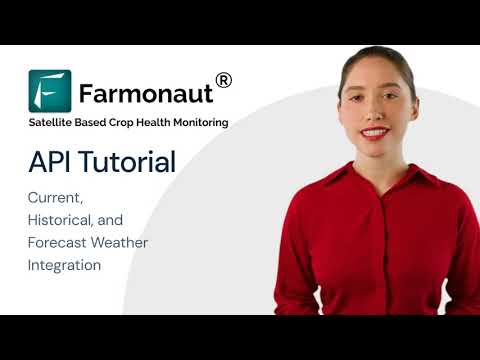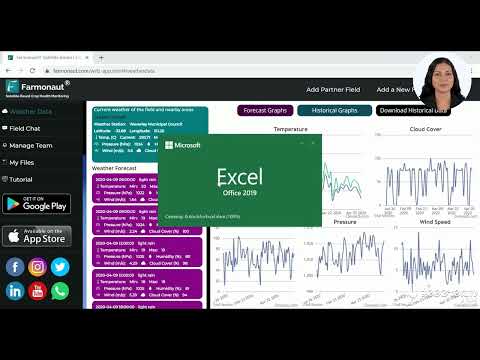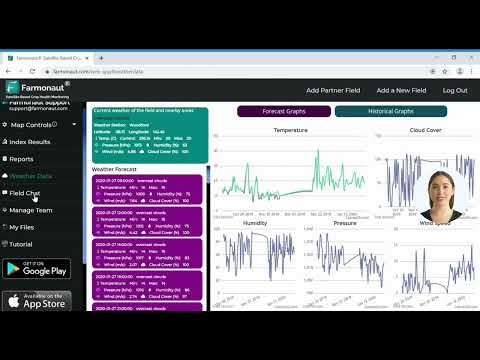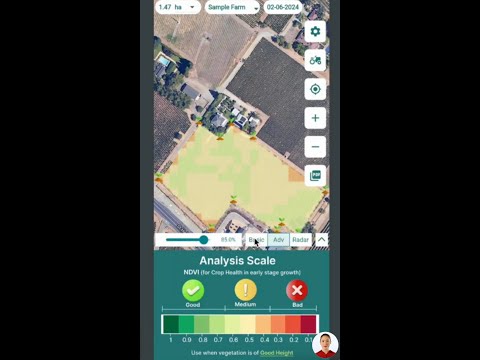Revolutionizing US Agriculture: Advanced Weather Forecasting Systems Drive Precision Farming and Market Growth
“The US weather forecasting systems market is projected to reach USD 832.2 million by 2029, driving precision farming advancements.”
In the ever-evolving landscape of American agriculture, precision and foresight have become paramount. As we delve into the intricate world of weather forecasting systems and their profound impact on the agricultural sector, we uncover a market poised for remarkable growth and transformation. The United States, with its vast agricultural expanse and technological prowess, stands at the forefront of this revolution, where cutting-edge weather prediction meets the age-old practice of farming.
The US weather forecasting systems market is on an impressive trajectory, with projections indicating a surge from USD 620.1 million in 2024 to a staggering USD 832.2 million by 2029. This growth, marked by a Compound Annual Growth Rate (CAGR) of 6.1%, underscores the increasing recognition of precise weather data as a cornerstone of modern agricultural practices.
The Nexus of Weather and Agriculture
Weather has always been the silent partner in agriculture, dictating the success or failure of crops since time immemorial. However, in today’s era of climate volatility and economic pressures, the ability to accurately predict and prepare for weather patterns has become more crucial than ever. Advanced weather forecasting systems are not just tools; they are the lifelines that connect farmers to the skies above, enabling them to make informed decisions that can mean the difference between a bountiful harvest and devastating losses.
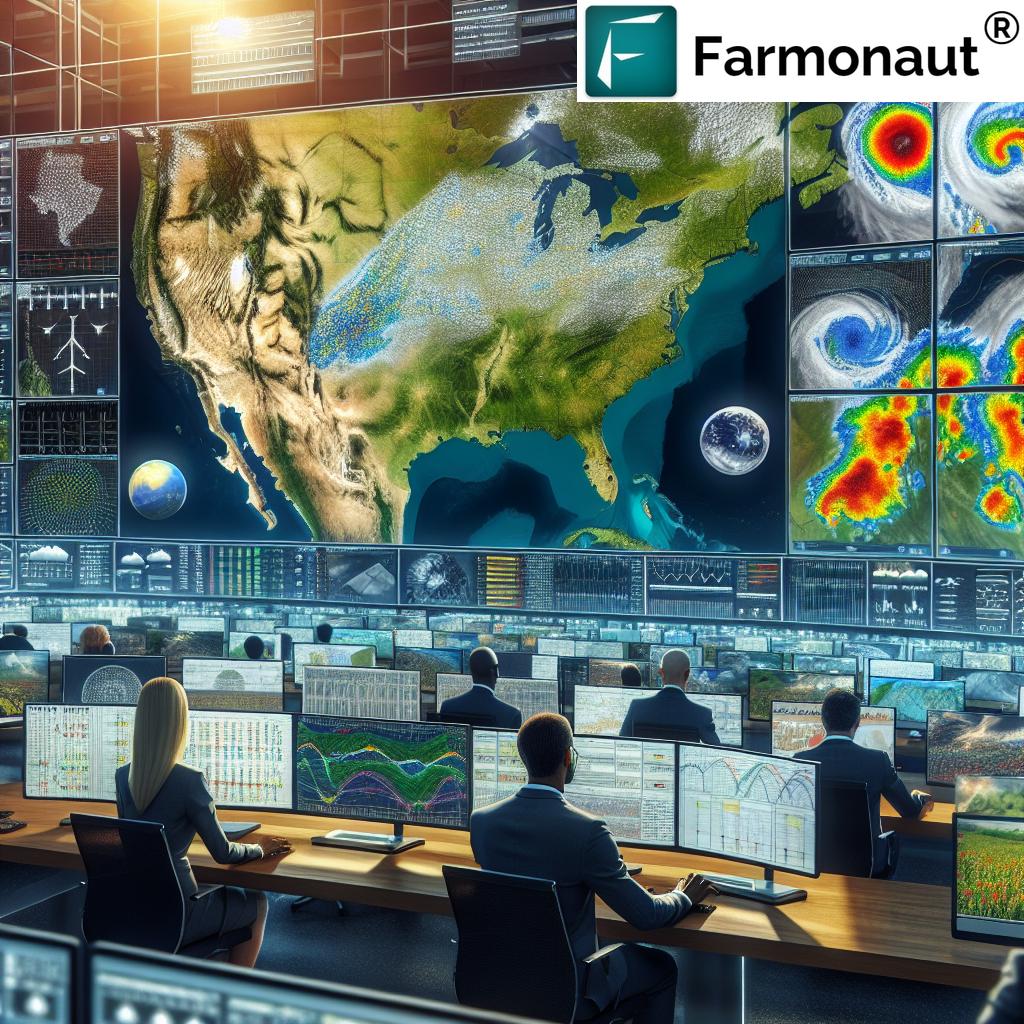
The United States Department of Agriculture (USDA) paints an optimistic picture for the future, with long-term projections suggesting a significant increase in agricultural exports by 2025. This growth is underpinned by steady global economic expansion, which in turn is bolstering the country’s agricultural sector. To capitalize on this potential, farmers and agribusinesses are turning to advanced technologies and equipment that require precise predictions of critical factors such as:
- Soil moisture content
- Evapotranspiration levels
- Atmospheric temperature
- Humidity
These elements form the backbone of precision agriculture, a practice that is rapidly gaining traction across the United States. By leveraging accurate weather data, farmers can optimize their practices, leading to increased yields, reduced resource wastage, and improved sustainability.
The Hardware Revolution in Weather Forecasting
“Hardware solutions currently dominate the weather forecasting market, with meteorology emerging as a key growth driver.”
In the realm of weather forecasting systems, hardware components reign supreme. The market is bifurcated into hardware and software solutions, with the hardware segment claiming the lion’s share in 2024. This dominance is expected to continue, driven by the critical role that physical equipment plays in data collection and analysis.
The hardware segment encompasses a wide array of sophisticated instruments, including:
- Barometers
- Anemometers
- Hygrometers
- Rain gauges
- Thermometers
- Satellite sensors
- Weather radars
- Weather antennas
- Communication & data loggers
- Sounding systems & radiosondes
These instruments work in concert to provide a comprehensive picture of atmospheric conditions. Connected through various technologies such as Ethernet, General Packet Radio Services (GPRS), radios, satellites, short-haul, and fixed lines, they form an intricate network of data collection points that feed into the larger forecasting system.
Embedded sensors play a particularly crucial role in this ecosystem. These minute marvels of technology are capable of detecting the slightest changes in environmental conditions, providing real-time data that is essential for accurate weather predictions.
Software: The Brain Behind the Brawn
While hardware dominates the market share, the software segment is the intellectual powerhouse of weather forecasting systems. This category includes:
- Data collection & processing software
- Weather monitoring & display software
- Big data analytics software
- Supercomputing software
These software solutions are responsible for interpreting the vast amounts of data collected by hardware components, transforming raw numbers into actionable insights. The integration of artificial intelligence (AI) and machine learning algorithms has revolutionized this process, enabling more accurate and timely weather predictions than ever before.
For instance, carbon footprinting software has become increasingly important in the agricultural sector. This technology allows farmers and agribusinesses to monitor and reduce their environmental impact, aligning with global sustainability goals while optimizing their operations.
Meteorology: The Driving Force of Market Growth
The meteorology vertical has emerged as the powerhouse of the US Weather Forecasting System market, holding the largest share in 2024. This segment’s dominance reflects the growing demand for accurate, real-time forecasts across various industries, particularly in agriculture and aviation.
Meteorological services encompass a vast array of atmospheric layers, from the surface to the mesosphere. The complexity of atmospheric dynamics necessitates specialized systems capable of processing and analyzing diverse data inputs. These systems rely on:
- Multiple data sources
- Expert meteorologists
- Cutting-edge research
- Advanced instruments
The result is a comprehensive weather forecasting service that delivers accurate, actionable information to end-users across various sectors.
Precision Agriculture: A New Era of Farming
The marriage of advanced weather forecasting systems and agriculture has given birth to precision farming, a practice that is revolutionizing the way we grow food. By leveraging accurate weather predictions, farmers can make informed decisions about:
- Planting schedules
- Irrigation timing
- Fertilizer application
- Pest management
- Harvest planning
This level of precision not only increases crop yields but also significantly reduces resource wastage, leading to more sustainable and profitable farming practices.
Innovative platforms like Farmonaut are at the forefront of this agricultural revolution. By providing satellite-based farm management solutions, Farmonaut enables farmers to access real-time crop health monitoring, AI-based advisory systems, and resource management tools. This integration of technology into traditional farming practices is making precision agriculture more accessible and affordable for farmers of all scales.
Aviation: Ensuring Safety Through Accurate Forecasts
The United States boasts the largest number of airports globally, making aviation safety a top priority. The ongoing upgrade of weather forecasting systems plays a crucial role in ensuring the safety and efficiency of air travel. Accurate weather predictions are essential for:
- Flight planning
- Route optimization
- Turbulence avoidance
- Runway management
The U.S. Meteorological Office in Washington plays a pivotal role in this sector, providing critical data on upper wind speed, direction, and temperatures. This information is invaluable not only for aviation but also for supporting agricultural operations that may be affected by high-altitude weather patterns.
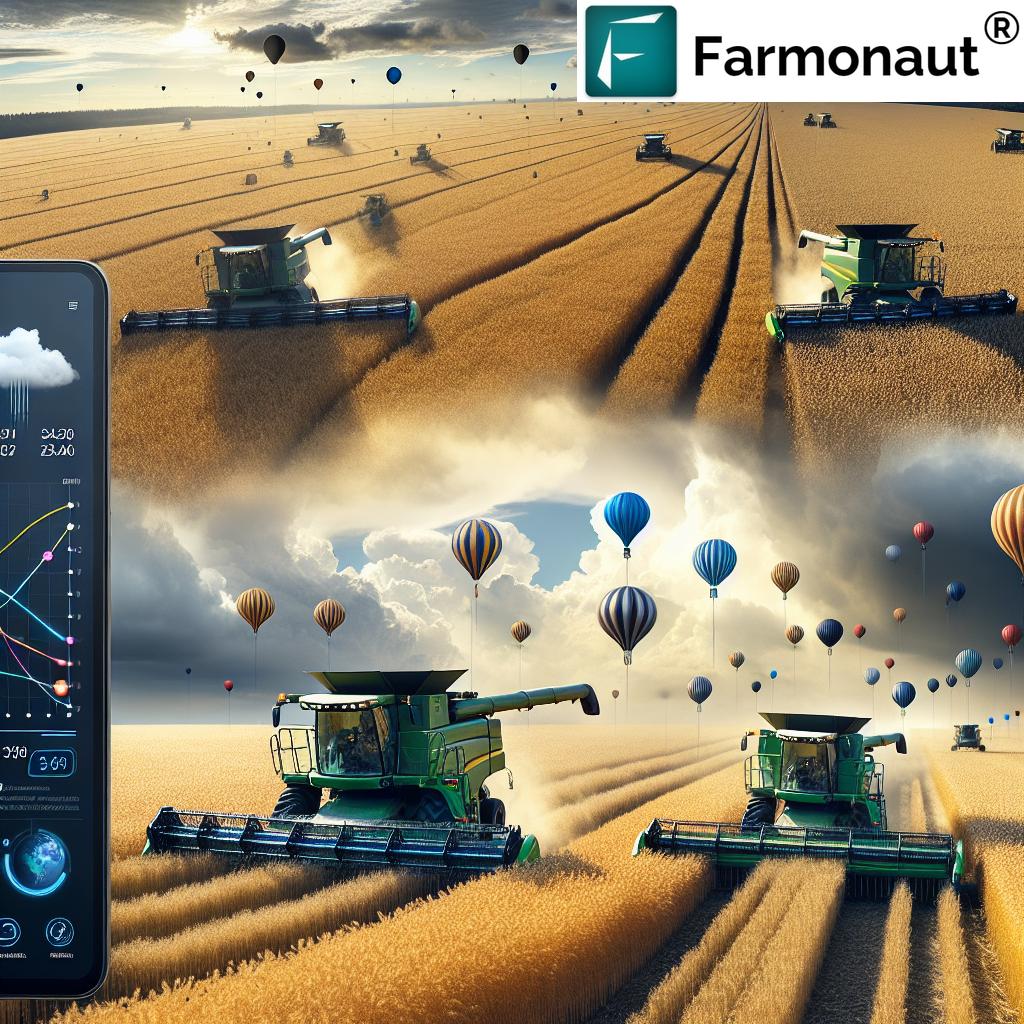
Market Leaders Driving Innovation
The growth of the US weather forecasting systems market is propelled by key industry leaders who are constantly pushing the boundaries of technology and innovation. Companies such as:
- The Weather Company (US)
- AccuWeather, Inc. (US)
- DTN (US)
- OTT Hydromet (US)
- Campbell Scientific (US)
These organizations are at the forefront of developing cutting-edge weather forecasting technologies and systems. Their ongoing advancements and adoption of state-of-the-art technologies play a crucial role in fueling market growth and improving the accuracy and functionality of weather prediction systems.
For example, The Weather Company leverages AI and machine learning to deliver precise and timely weather predictions. This level of accuracy is essential for industries like aviation and agriculture, where even small variations in weather can have significant impacts on operations and safety.
The Role of Big Data and Analytics
The explosion of data in the digital age has transformed weather forecasting from an art into a precise science. Big data analytics software has become an indispensable tool in the meteorologist’s arsenal, enabling the processing and analysis of vast amounts of information from diverse sources.
These advanced analytics platforms can:
- Identify patterns in historical weather data
- Process real-time satellite imagery
- Integrate ground-based sensor readings
- Run complex climate models
The result is a more nuanced and accurate understanding of weather patterns, leading to improved long-range forecasts and more reliable short-term predictions.
The Future of Weather Forecasting: AI and Machine Learning
As we look to the future, artificial intelligence and machine learning are set to play an even more significant role in weather forecasting. These technologies have the potential to:
- Enhance the accuracy of short-term forecasts
- Improve long-range climate predictions
- Automate the analysis of complex weather patterns
- Provide personalized weather alerts and recommendations
AI-powered systems can process and learn from vast amounts of historical and real-time data, identifying subtle patterns and correlations that might escape human analysts. This capability is particularly valuable in predicting extreme weather events and understanding the impacts of climate change on local weather patterns.
Platforms like Farmonaut’s crop plantation and forest advisory services are already leveraging AI to provide farmers with personalized recommendations based on weather forecasts and crop-specific data. This integration of AI into agricultural decision-making processes is a glimpse into the future of farming, where data-driven insights lead to more resilient and productive agricultural practices.
Market Segmentation and Growth Projections
| Market Segment | Current Market Share (%) | Projected Market Share 2029 (%) | Growth Drivers |
|---|---|---|---|
| Hardware Solutions | 55 | 52 | Advancements in sensor technology, increased demand for high-resolution data |
| – Meteorological Equipment | 30 | 28 | Upgrade of existing infrastructure, expansion of weather monitoring networks |
| Software Solutions | 35 | 40 | Integration of AI and machine learning, demand for real-time analytics |
| – Data Analytics Software | 20 | 25 | Growing need for predictive modeling, big data processing capabilities |
| Services | 10 | 8 | Increasing outsourcing of weather forecasting services by small businesses |
| Agriculture Vertical | 25 | 30 | Adoption of precision farming techniques, climate change adaptation strategies |
| Aviation Vertical | 20 | 22 | Focus on flight safety, fuel efficiency through optimized routing |
| Transportation Vertical | 15 | 18 | Integration of weather data in logistics planning, road safety initiatives |
Challenges and Opportunities
While the future of weather forecasting in the US looks bright, there are challenges that the industry must address:
- Data privacy concerns
- Integration of diverse data sources
- Cybersecurity threats to weather infrastructure
- Balancing computational power with energy efficiency
However, these challenges also present opportunities for innovation and growth. For instance, the development of secure, blockchain-based data sharing platforms could revolutionize how weather information is distributed and used across industries.
Traceability solutions, such as those offered by Farmonaut, are becoming increasingly important in the agricultural sector. These systems not only enhance food safety and supply chain transparency but also provide valuable data that can be integrated into weather forecasting models to improve prediction accuracy for specific agricultural regions.
The Economic Impact of Advanced Weather Forecasting
The economic implications of improved weather forecasting extend far beyond the agricultural sector. Accurate predictions can:
- Reduce energy consumption through better demand forecasting
- Improve disaster preparedness and response
- Enhance efficiency in transportation and logistics
- Support sustainable urban planning and development
For the agricultural sector specifically, the impact is profound. Farmers equipped with precise weather data can make informed decisions about:
- Crop selection and rotation
- Optimal planting and harvesting times
- Efficient use of water resources
- Targeted application of fertilizers and pesticides
These improvements lead to increased yields, reduced input costs, and more sustainable farming practices. The economic benefits ripple through the entire agricultural supply chain, from individual farmers to large agribusinesses and ultimately to consumers.
Integrating Weather Data into Farm Management
The true power of advanced weather forecasting systems lies in their integration with farm management practices. Modern agricultural platforms, like Farmonaut, are bridging the gap between complex meteorological data and practical, on-farm decision-making.
These integrated systems offer features such as:
- Real-time crop health monitoring based on weather conditions
- Automated irrigation systems that respond to forecasted rainfall
- Pest and disease risk assessments linked to weather patterns
- Yield prediction models that incorporate long-range weather forecasts
By leveraging these tools, farmers can make proactive decisions that optimize their operations and mitigate risks associated with adverse weather conditions.
Crop loan and insurance solutions are also benefiting from advanced weather forecasting. These financial products can now be more accurately priced and managed, leading to better protection for farmers and reduced risk for lenders and insurers.
The Role of Government and Research Institutions
The advancement of weather forecasting systems in the US is not solely a private sector endeavor. Government agencies and research institutions play a crucial role in driving innovation and setting standards for the industry. Key players include:
- National Oceanic and Atmospheric Administration (NOAA)
- National Weather Service (NWS)
- National Center for Atmospheric Research (NCAR)
- University research departments
These organizations conduct fundamental research, maintain essential infrastructure, and provide public weather services that form the backbone of the nation’s weather forecasting capabilities. Their work complements and supports the innovations coming from the private sector, creating a robust ecosystem that benefits all stakeholders.
Looking Ahead: The Next Frontier in Weather Forecasting
As we look to the future, several exciting developments are on the horizon for weather forecasting systems:
- Quantum computing for ultra-high-resolution climate modeling
- Integration of IoT devices for hyper-local weather data collection
- Advanced satellite technology for improved atmospheric monitoring
- Personalized weather services tailored to individual user needs
These advancements promise to further enhance the accuracy and utility of weather forecasts, driving continued growth in the market and supporting innovation across multiple sectors of the economy.
For the agricultural sector, the future of weather forecasting holds the promise of even greater precision and integration. Farmers may soon have access to field-level microclimate predictions, enabling them to manage their crops with unprecedented accuracy. This level of detail could revolutionize practices such as precision irrigation, targeted pest control, and optimized harvesting schedules.
Conclusion: A Weather-Wise Future for US Agriculture
The growth of the US weather forecasting systems market, projected to reach USD 832.2 million by 2029, signals a transformative era for American agriculture. As we’ve explored, the integration of advanced weather prediction technologies with precision farming practices is creating a more resilient, efficient, and sustainable agricultural sector.
From the hardware that captures minute atmospheric changes to the sophisticated software that translates data into actionable insights, every component of modern weather forecasting systems plays a crucial role in shaping the future of farming. The dominance of hardware solutions and the emergence of meteorology as a key growth driver underscore the tangible, physical nature of this technological revolution.
As farmers and agribusinesses continue to adopt these advanced systems, we can anticipate:
- Increased crop yields and quality
- More efficient use of water and other resources
- Reduced environmental impact of agricultural practices
- Enhanced ability to adapt to climate change
- Improved food security and economic stability in rural communities
The journey towards a weather-wise agricultural future is well underway, driven by innovation, collaboration, and the relentless pursuit of precision. As we continue to refine our ability to predict and respond to nature’s rhythms, we move closer to a world where farming is not just a practice, but a finely tuned science, harmonizing with the very elements it depends upon.
FAQs
- How are advanced weather forecasting systems improving agricultural practices?
Advanced weather forecasting systems provide farmers with precise predictions of factors like soil moisture, temperature, and precipitation. This allows for optimized irrigation, planting, and harvesting schedules, leading to increased crop yields and reduced resource waste. - What role does AI play in modern weather forecasting?
AI and machine learning algorithms analyze vast amounts of weather data to identify patterns and make more accurate predictions. This technology enhances both short-term forecasts and long-range climate projections, benefiting various industries, including agriculture and aviation. - How is the US weather forecasting systems market expected to grow?
The market is projected to reach USD 832.2 million by 2029, growing at a CAGR of 6.1% from 2024 to 2029. This growth is driven by increasing demand for precise weather data across multiple sectors, particularly agriculture and aviation. - What are the key components of modern weather forecasting systems?
Modern systems include hardware components like sensors, radars, and satellites, as well as software solutions for data processing and analytics. These are complemented by advanced technologies such as AI and big data analytics for improved accuracy and insights. - How do weather forecasting systems contribute to sustainable farming practices?
By providing accurate predictions, these systems enable farmers to optimize resource use, reduce chemical inputs, and make informed decisions about crop management. This leads to more sustainable practices, reduced environmental impact, and improved long-term soil health.
Earn With Farmonaut: Affiliate Program
Earn 20% recurring commission with Farmonaut’s affiliate program by sharing your promo code and helping farmers save 10%. Onboard 10 Elite farmers monthly to earn a minimum of $148,000 annually—start now and grow your income!
Farmonaut Subscriptions
Access Farmonaut’s advanced agricultural solutions:
For developers interested in integrating weather data into their applications, explore the Farmonaut API and the comprehensive API Developer Documentation.
